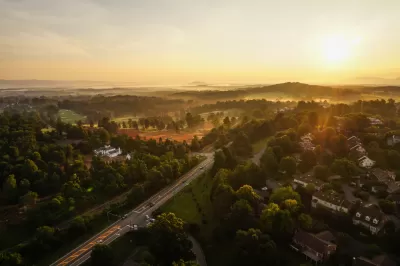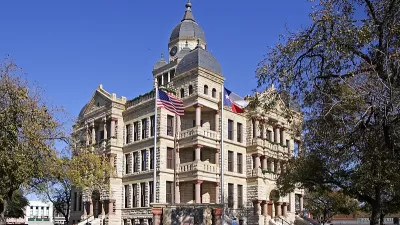Transit ridership has been waning in Charlottesville, Virginia, but a regional system could benefit the area’s operators and better meet the mobility needs of riders.

A regional transit system in Charlottesville, Virginia, could be the solution to the area's mobility challenges, including a drop in ridership on the Charlottesville Area Transit system of more than 25 percent in the last five years.
"By [CAT director Garland] Williams' own admission the current system is failing riders due to unreliability, decreasing coverage, and one-way routes that serve CAT better than they do its customers," writes Wyatt Gordon.
The Jefferson Area Regional Transit Partnership Expansion is an advisory body exploring expansion through establishment of a regional transit authority. An authority would bring together the three transit operations in the area: CAT, University of Virginia’s student shuttle, and JAUNT, a microtransit service for regional commuters.
"If the three are able to stitch together their services under one umbrella as a regional transit authority that could unlock new state and federal funding that none are eligible for on their own," notes Gordon.
The Charlottesville area is facing increased housing costs, congestion, and pollution, making improved mobility a policy priority. "With sprawl on the rise and more locals driving to work from far-flung counties, it makes sense that the region is seeing a renewed push for transit—and may be willing to pay for it," adds Gordon.
FULL STORY: Could regional expansion solve Charlottesville, Virginia’s transit “death spiral?”

Maui's Vacation Rental Debate Turns Ugly
Verbal attacks, misinformation campaigns and fistfights plague a high-stakes debate to convert thousands of vacation rentals into long-term housing.

Planetizen Federal Action Tracker
A weekly monitor of how Trump’s orders and actions are impacting planners and planning in America.

In Urban Planning, AI Prompting Could be the New Design Thinking
Creativity has long been key to great urban design. What if we see AI as our new creative partner?

King County Supportive Housing Program Offers Hope for Unhoused Residents
The county is taking a ‘Housing First’ approach that prioritizes getting people into housing, then offering wraparound supportive services.

Researchers Use AI to Get Clearer Picture of US Housing
Analysts are using artificial intelligence to supercharge their research by allowing them to comb through data faster. Though these AI tools can be error prone, they save time and housing researchers are optimistic about the future.

Making Shared Micromobility More Inclusive
Cities and shared mobility system operators can do more to include people with disabilities in planning and operations, per a new report.
Urban Design for Planners 1: Software Tools
This six-course series explores essential urban design concepts using open source software and equips planners with the tools they need to participate fully in the urban design process.
Planning for Universal Design
Learn the tools for implementing Universal Design in planning regulations.
planning NEXT
Appalachian Highlands Housing Partners
Mpact (founded as Rail~Volution)
City of Camden Redevelopment Agency
City of Astoria
City of Portland
City of Laramie




























